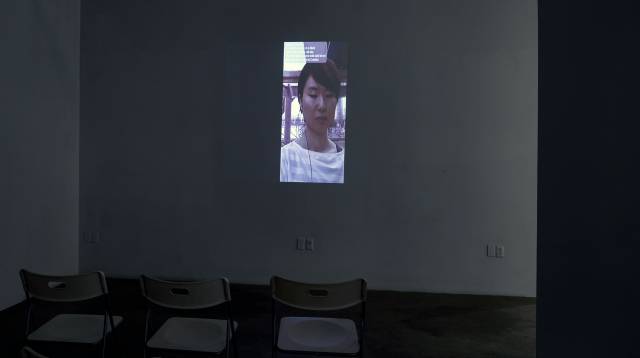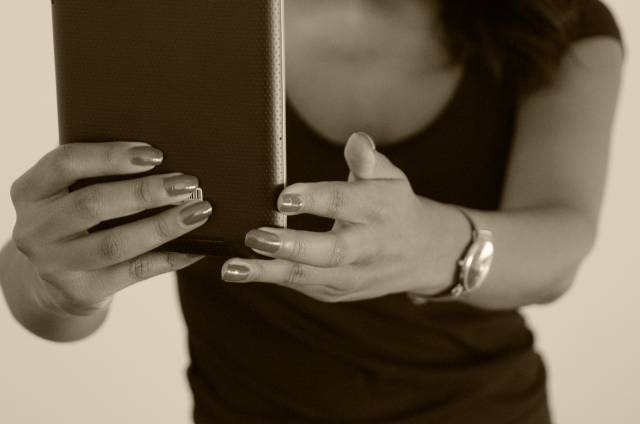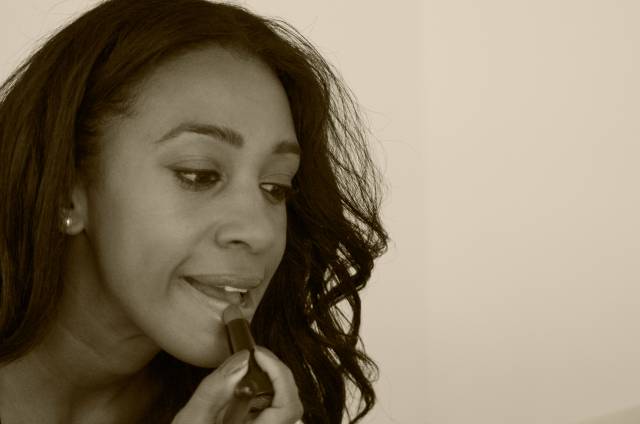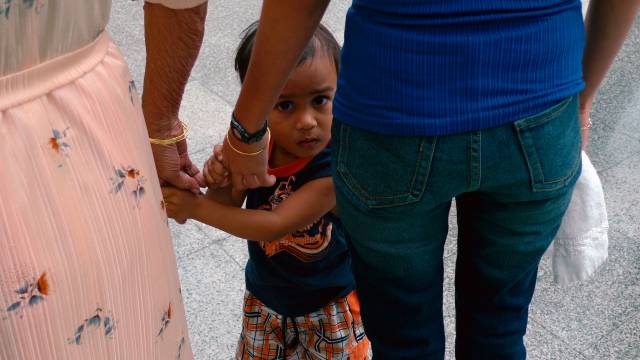Project framework: context, research questions, summary of research insights
Face Up (2015) is an artwork that uses embedded smartphone aesthetics to imagine diasporic lives. The main output is a single-screen video work of fictional scenes, based on snatches of conversation overheard while travelling through London on foot and on public transport. As characters negotiate their lives, they inhabit two worlds – the physical and the virtual – and smartphone technologies become an extension of the self. The video reflects our use of smartphone applications in that it is conceived as six scenes or “idents”, created as silent, stop- animations of digital photographs and short texts, using a vertical HD format, with each scene projected randomly. The installation also includes three photographic prints.
Context
In my practice I use digital imaging and video to explore colonial and postcolonial histories, the politics of racialised non-western identities, European hegemonies and social issues, including poverty, healthcare and personal safety. This project uses both the artistic scope and limitations of digital environments to create work that comments on the social conditions producing racism, inequality and general precariousness of life for anyone black and living in the city. It uses the capacity of digital technologies and environments to explore the ways in which the legacy of colonialism impedes current life stories. My work builds on that of critics (Baker, Soutter, Krauss, Kluis), photographers and artists (Burgin, Steyerl, Mattes, Piper, Soon) who have long explored the elided (or ignored) spaces of the image; a field of study that today increasingly converges with networked communications and video and screenbased technologies.
Face Up is concerned with an expanded form of the digital image, its aesthetics deriving from the functionality and behavioural use of smartphone technologies and communications networks (Turkle, Plant, Haraway). It is also concerned with how to develop multimedia story lines via the conventions of text-based messaging (WhatsApp, Messenger, Twitter). By drawing on the aesthetics of the smartphone interface and the possibilities of the software, the research aims to contribute new approaches to representations of the self, migration, racism and inequality as social conditions of urban life experiences.
Key questions
The project investigates:
1 How smartphone imagery might be developed to reflect multicultural urban life and the experiences of the diasporised self
2 What imagery might result from deploying smartphone aesthetics in artistic production
3 How overheard smartphone conversations might provide a basis for diasporic story lines
4 How collaboration can deliver the knowledge set required to produce original smartphone-based art
Summary of research insights
Using overheard smartphone conversations as the basis of fictional narratives, the project produced a six-scene silent video, mixing text and found imagery to shed light on multicultural urban life. Its methodological approach develops layering and photomontage techniques I have used in digital photographic projects and these enabled me, through a collaborative effort, to explore the possibilities of smartphone technologies and aesthetics to the full.
| Creators | Kempadoo, R. |
|---|---|
| Description | Kempadoo’s research focused on smartphone imagery in order to reflect multicultural urban life and the experiences of the diasporised self, addressing imagery deploying smartphone aesthetics in artistic production. Overheard dialogue on |
| Portfolio items | Ghosts: Keith Piper/Roshini Kempadoo |
| Urban Candy: Screens, Selfies and Imaginings | |
| After Indenture: Three Photo Stories Roshini Kempadoo; Sharlene Khan; Wendy Nanan | |
| Year | 2015 |
| Publisher | University of Westminster |
| Web address (URL) | https://vimeo.com/376952122 |
| Keywords | CREAM Portfolio |
| Digital Object Identifier (DOI) | https://doi.org/10.34737/qq895 |
| File |



